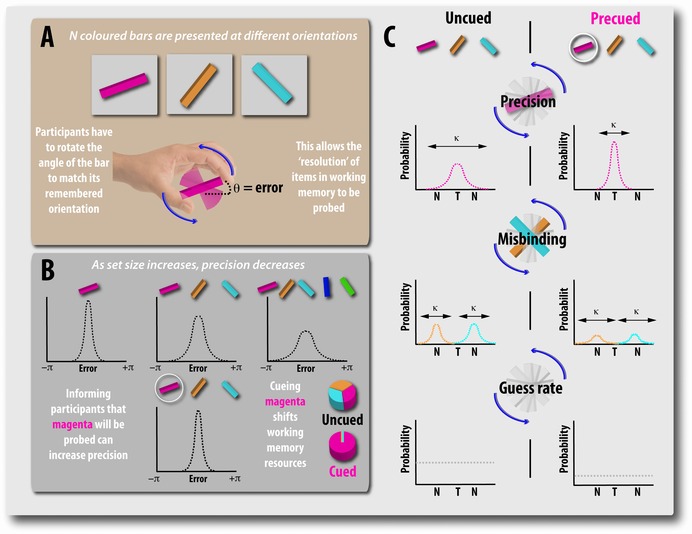Figure 1.

Recall precision: a new way to measure the fidelity of working memory. Sequential working memory task in which recall precision is measured on a continuous analog scale (e.g., Ref. 21). (A) Participants are presented with a series of bars, each of a different color. After a variable delay, they have to reproduce the orientation of the probed item (in this case, the magenta bar) by rotating it to match their memory. (B) Using such methods, it has become apparent that, as the number of items increases, the precision of recall decreases. Moreover, precueing the item by telling the participant which of the bars is going to be probed restores precision levels to that observed for one item. (C) These methods also allow participants’ recall error to be decomposed into three components. First, error can be due to imprecise memory of the target item, T (top). Second, error may result from being corrupted by other nontarget items (labeled N) in the sequences (middle). These so‐called misbinding errors occur when the orientation of one of the nonprobed items is erroneously reported (e.g., participant responds with the orientation of the orange or blue bar when probed with the magenta bar). Finally, error may result from guessing, in which case there will be no systematic relationship between the orientations of the memoranda and the participant's response (bottom).
